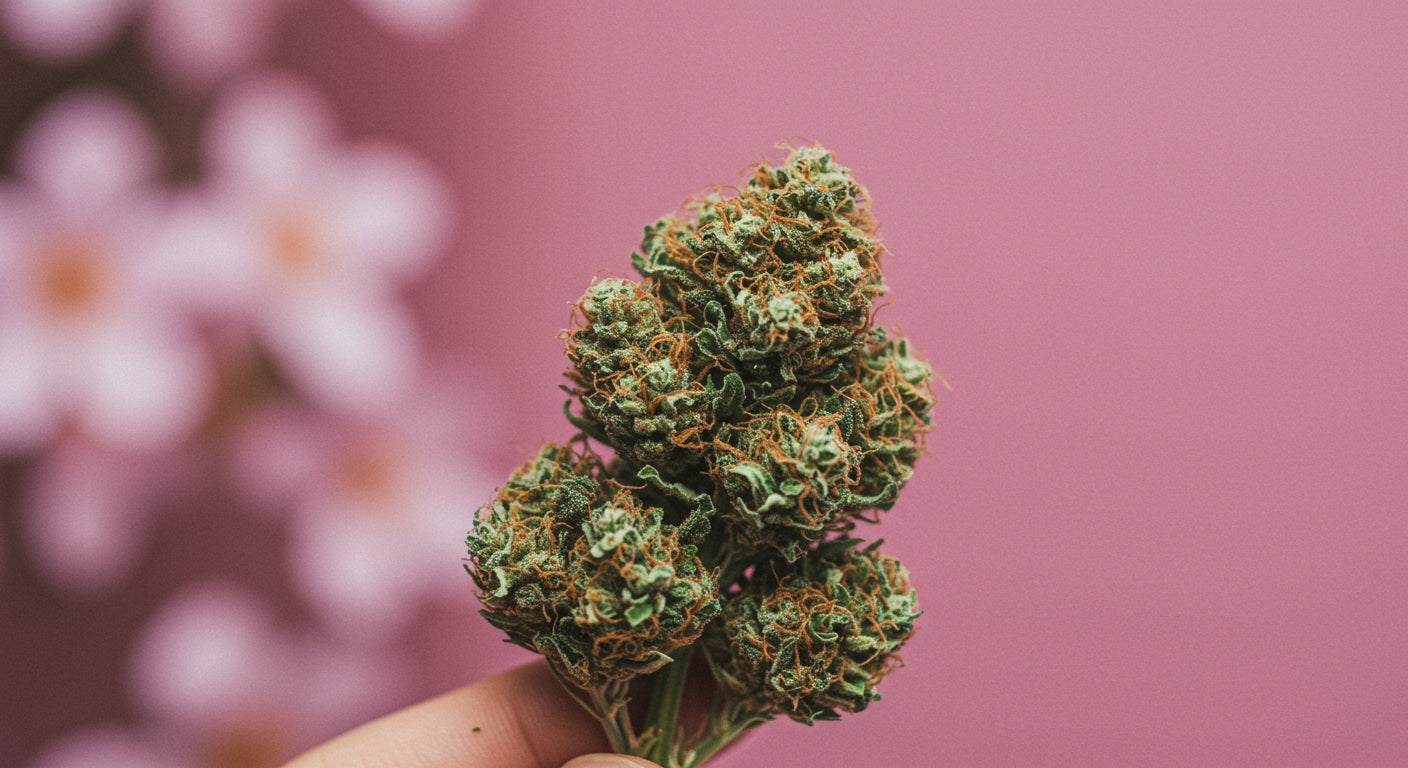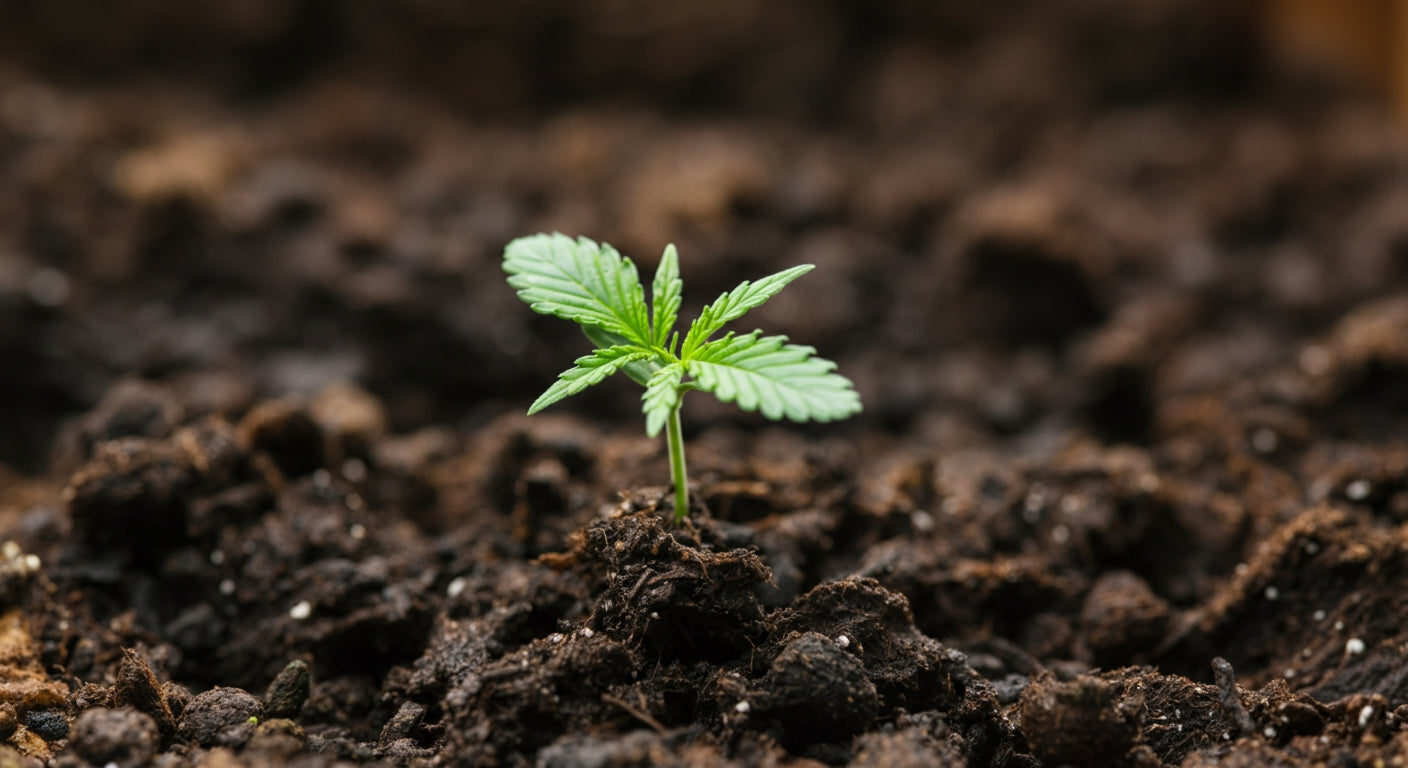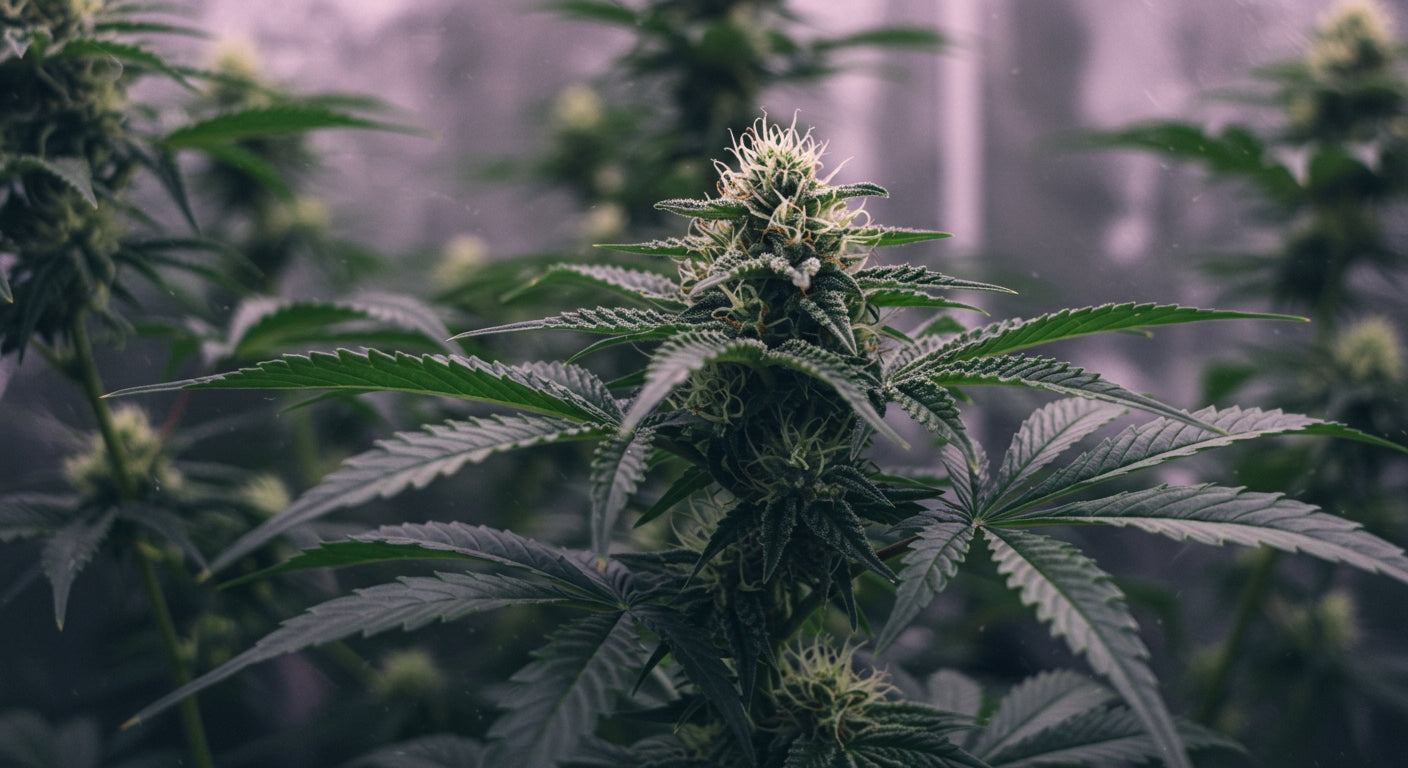
How to Grow Dense Cannabis: Your Complete Guide to Growing Compact, Potent Buds
Dense cannabis buds are the hallmark of professional cultivation and the goal every serious grower strives to achieve. These tight, compact, resin-covered flowers not only look impressive but typically contain higher cannabinoid concentrations and better bag appeal than loose, airy buds. The difference between dense and fluffy cannabis often separates amateur grows from professional results.
Growing dense cannabis requires mastering multiple cultivation factors simultaneously: precise environmental control, optimal lighting, proper nutrition, effective training techniques, and strategic genetic selection. Each element plays a crucial role in encouraging your plants to develop the tight, compact flower structure that defines premium cannabis.
This comprehensive guide reveals the professional techniques used to consistently produce dense, high-quality cannabis buds. With proper implementation of these strategies and controlled growing environments, you can achieve the dense, potent results that command premium prices and personal satisfaction.

Understanding Cannabis Bud Density
What Makes Cannabis Dense vs. Airy
Dense Bud Characteristics:
- Tight calyx formation: Individual calyxes packed closely together
- Minimal stem showing: Flowers completely cover branch structure
- Heavy feel: Significant weight relative to size
- Compact structure: Buds maintain shape when gently squeezed
- Rich trichome coverage: Resin glands densely packed on surface
Airy Bud Characteristics:
- Loose calyx formation: Gaps between individual flower clusters
- Visible stems: Branch structure easily seen through flowers
- Light weight: Feels insubstantial for size
- Fluffy texture: Compresses easily and doesn't hold shape
- Sparse trichomes: Less resin production overall
Factors Affecting Bud Density
Genetic Factors:
- Strain selection: Indica-dominant varieties naturally denser
- Breeding lineage: Dense parent genetics produce dense offspring
- Phenotype variation: Different expressions within same strain
- Environmental adaptation: Some strains adapted to specific conditions
Environmental Factors:
- Light intensity and spectrum: Directly affects flower development
- Temperature control: Optimal ranges encourage tight structure
- Humidity management: Proper levels prevent loose growth
- Air circulation: Adequate airflow strengthens bud structure
Cultivation Factors:
- Nutrient timing: Proper feeding schedules support dense development
- Training techniques: Methods that optimize light penetration
- Harvest timing: Peak density occurs at specific maturity windows
- Drying and curing: Proper post-harvest maintains density
Lighting Strategies for Dense Cannabis
Optimal Light Intensity for Dense Buds
PPFD Requirements:
- Early flowering: 600-800 PPFD for initial bud formation
- Mid-flowering: 800-1000 PPFD for rapid development
- Late flowering: 1000-1200 PPFD for maximum density
- Strain variation: Adjust based on individual plant response
Light Penetration Techniques:
- Canopy management: Ensure light reaches all bud sites
- Defoliation strategies: Remove fan leaves blocking lower buds
- Training methods: Create even canopy for uniform light distribution
- Light positioning: Optimize distance and angle for coverage
Professional grow tent systems with reflective interiors maximize light efficiency and ensure even distribution for optimal bud development.
Spectrum Requirements for Dense Growth
Full-Spectrum Benefits:
- Blue spectrum (400-500nm): Promotes tight internodal spacing
- Red spectrum (600-700nm): Triggers flowering and bud development
- Far-red spectrum (700-800nm): Enhances resin production
- UV spectrum (280-400nm): Increases trichome density and potency
Flowering Spectrum Optimization:
- Transition phase: Gradually shift from blue to red dominant
- Peak flowering: Emphasize red spectrum for maximum density
- Final weeks: Include UV and far-red for resin enhancement
- Daily light integral: Maintain consistent photon delivery
Light Scheduling for Dense Buds
Photoperiod Management:
- Strict 12/12 schedule: Consistent timing prevents stress
- No light leaks: Even brief interruptions reduce density
- Gradual transitions: Avoid sudden schedule changes
- Environmental synchronization: Align light cycles with temperature
DLI Optimization:
- Calculate daily light integral: Ensure adequate photon delivery
- Adjust for growth stage: Increase DLI during peak flowering
- Monitor plant response: Signs of light stress vs. deficiency
- Optimize efficiency: Maximum photosynthesis without waste

Environmental Control for Maximum Density
Temperature Management
Optimal Temperature Ranges:
- Vegetative stage: 75-80°F for strong structural development
- Early flowering: 70-75°F to initiate tight bud formation
- Mid-flowering: 65-70°F for maximum density development
- Late flowering: 60-65°F for final resin production
Temperature Control Benefits:
- Cooler temperatures: Encourage tighter, more compact growth
- Stable conditions: Prevent stress that leads to loose structure
- Day/night differential: 10-15°F drop enhances density
- Strain-specific adjustment: Some varieties prefer different ranges
Humidity Control for Dense Growth
Humidity Schedules:
- Vegetative: 50-60% RH for healthy growth
- Early flowering: 45-50% RH to prevent mold
- Mid-flowering: 40-45% RH for dense development
- Late flowering: 35-40% RH for final density
Humidity management becomes critical during flowering to prevent bud rot while encouraging tight structure.
VPD Optimization:
- Maintain optimal VPD: 1.0-1.5 kPa during flowering
- Balance temperature/humidity: Optimize transpiration rates
- Adjust for growth stage: Different VPD targets throughout flowering
- Monitor plant response: Signs of optimal vs. suboptimal VPD
Air Circulation and CO2
Airflow Requirements:
- Gentle circulation: Strengthen stems without causing stress
- Penetrating airflow: Reach all bud sites for even development
- Exhaust efficiency: Remove heat and humidity effectively
- Fresh air exchange: Maintain CO2 levels for photosynthesis
CO2 Supplementation:
- Flowering enhancement: 1000-1500 PPM during peak development
- Sealed environment: Required for effective CO2 use
- Temperature adjustment: Higher CO2 allows higher temperatures
- Timing optimization: Most effective during peak light hours
Nutrition Strategies for Dense Buds
Flowering Nutrient Requirements
Phosphorus and Potassium:
- Phosphorus boost: Essential for dense flower development
- Potassium levels: Supports resin production and structure
- PK ratios: Adjust throughout flowering stages
- Organic vs. synthetic: Both can produce dense results
Micronutrient Importance:
- Calcium: Strengthens cell walls for structural integrity
- Magnesium: Essential for chlorophyll and photosynthesis
- Sulfur: Promotes terpene and cannabinoid production
- Trace elements: Support overall plant health and density
Feeding Schedules for Maximum Density
Flowering Timeline:
- Week 1-2: Transition nutrients, moderate feeding
- Week 3-5: Peak feeding for rapid bud development
- Week 6-8: Maintain nutrition for density building
- Week 9+: Reduce feeding, flush for final density
EC/PPM Management:
- Gradual increases: Build nutrient levels throughout flowering
- Peak feeding: 1.8-2.4 EC during maximum development
- Strain tolerance: Adjust based on plant response
- Flush timing: 1-2 weeks before harvest for density
Organic vs. Synthetic for Density
Organic Approaches:
- Slower release: Steady nutrition for consistent development
- Soil biology: Beneficial microorganisms enhance uptake
- Terpene enhancement: Often produces more flavorful buds
- Long-term feeding: Sustained nutrition throughout flowering
Synthetic Precision:
- Immediate availability: Rapid nutrient adjustments
- Precise ratios: Exact NPK control for optimization
- Hydroponic compatibility: Works well in soilless systems
- Predictable results: Consistent outcomes with proper dosing
Training Techniques for Dense Cannabis
Canopy Management for Density
Screen of Green (SCROG):
- Even canopy: Uniform light distribution to all bud sites
- Horizontal training: Encourages multiple dense colas
- Light penetration: Improved access to lower branches
- Yield optimization: Maximum density across entire plant
Defoliation Strategies:
- Strategic removal: Target fan leaves blocking bud sites
- Timing importance: Defoliate at key flowering stages
- Gradual approach: Avoid shock from excessive removal
- Recovery time: Allow plants to adjust between sessions
Training Methods for Structure
Low Stress Training (LST):
- Horizontal growth: Encourages multiple dense colas
- Gentle manipulation: Avoids stress that reduces density
- Continuous adjustment: Ongoing training throughout growth
- Support systems: Maintain structure as buds develop weight
Supercropping Techniques:
- Controlled stress: Increases resin production
- Timing considerations: Apply during vegetative or early flowering
- Recovery monitoring: Ensure plants heal properly
- Selective application: Target specific branches for density
Training works especially well in height-adjustable grow tents that accommodate changing plant structures.
Strain Selection for Dense Buds
Indica vs. Sativa Density Characteristics
Indica Strains:
- Naturally dense: Genetic predisposition for tight structure
- Shorter flowering: Faster development to peak density
- Compact growth: Easier to manage for density
- Higher yields: More weight per plant typically
Sativa Influences:
- Longer flowering: More time to develop full density
- Stretchy growth: Requires more training for density
- Airy tendencies: Some sativas naturally produce looser buds
- Environmental sensitivity: More responsive to growing conditions
Recommended Dense Strains
Indica-Dominant Varieties:
- Northern Lights: Consistently dense, easy to grow
- Granddaddy Purple: Tight purple buds with excellent density
- Afghani: Classic dense structure, high resin production
- Bubba Kush: Extremely dense, compact growth
Hybrid Recommendations:
- Girl Scout Cookies: Dense structure with sativa effects
- Gorilla Glue: Massive resin production, tight buds
- Wedding Cake: Excellent density and bag appeal
- Gelato: Beautiful dense nugs with superior trichome coverage
Timing and Harvest for Maximum Density
Peak Density Windows
Trichome Development:
- Clear stage: Early, density still developing
- Cloudy stage: Peak density and potency
- Amber stage: Maintained density, changing effects
- Optimal timing: 70-80% cloudy trichomes for density
Harvest Timing Impact:
- Too early: Reduced density and potency
- Peak timing: Maximum density and cannabinoid content
- Too late: Maintained density but degraded cannabinoids
- Strain variation: Some strains peak earlier or later
Learn more about optimal harvest timing for maximum density and potency.
Pre-Harvest Techniques
Stress Techniques:
- Light deprivation: 48-72 hours darkness before harvest
- Cold stress: Lower temperatures final weeks
- Drought stress: Reduced watering to concentrate compounds
- Timing importance: Apply carefully to avoid damage
Flush Considerations:
- Nutrient reduction: Improves final density and flavor
- Timing: 1-2 weeks before harvest typically
- Water quality: pH-adjusted water for proper flush
- Monitoring: Watch for proper fade and density maintenance
Common Density Problems and Solutions
Diagnosing Density Issues
Environmental Causes:
- Excessive heat: Causes loose, airy structure
- Poor lighting: Insufficient intensity reduces density
- High humidity: Promotes loose growth patterns
- Inadequate airflow: Reduces structural strength
Nutritional Issues:
- Phosphorus deficiency: Directly reduces bud density
- Potassium problems: Affects overall structure
- Overfeeding: Can cause loose, leafy growth
- pH imbalances: Prevent proper nutrient uptake
Solutions for Dense Growth
Environmental Optimization:
- Temperature control: Maintain cooler flowering temperatures
- Lighting upgrades: Increase intensity during flowering
- Humidity management: Reduce RH during bud development
- Air circulation: Improve airflow throughout canopy
Technique Improvements:
- Training adjustments: Optimize light penetration
- Nutrient timing: Proper feeding schedules
- Strain selection: Choose naturally dense varieties
- Harvest timing: Wait for peak density development
FAQ Section
Q: What makes cannabis buds dense vs. airy? A: Dense buds result from tight calyx formation, proper environmental conditions, adequate lighting, and optimal genetics. Airy buds typically develop from excessive heat, insufficient light, improper nutrients, or genetics that naturally produce looser structures.
Q: Can you make airy buds dense after harvest? A: No, bud density is determined during the growing and flowering process. Proper drying and curing can maintain density but cannot create it after harvest. Dense buds must be grown with proper techniques from the start.
Q: What's the best temperature for growing dense cannabis? A: Maintain 70-75°F during early flowering, then reduce to 65-70°F during peak bud development, and finish at 60-65°F for maximum density. Cooler temperatures during flowering encourage tighter, more compact bud structure.
Q: How does lighting affect cannabis bud density? A: Higher light intensity (800-1200 PPFD) during flowering promotes denser buds. Proper spectrum with adequate red light triggers dense flower development, while insufficient lighting leads to loose, airy structures.
Q: Which cannabis strains naturally produce the densest buds? A: Indica-dominant strains like Northern Lights, Granddaddy Purple, and Afghani naturally produce denser buds. Hybrids like Girl Scout Cookies and Gorilla Glue also develop excellent density with proper growing techniques.
Featured Snippet Summary
How to grow dense cannabis: Maintain 65-70°F during flowering, provide 800-1200 PPFD lighting, reduce humidity to 40-45%, use phosphorus-rich nutrients, train plants with SCROG or LST, choose indica-dominant strains, and harvest at 70-80% cloudy trichomes. Cool temperatures, intense lighting, and proper nutrition are key to dense bud development.
Achieve Professional-Grade Dense Cannabis Every Time
Dense cannabis buds don't happen by accident - they're the result of precise environmental control, optimal lighting, and professional growing techniques that many home growers struggle to achieve consistently. The difference between amateur and professional results often comes down to having the right equipment and environment.
Gorilla Grow Tents provide the environmental stability and control necessary for growing consistently dense cannabis. With superior insulation, precise ventilation systems, and professional-grade construction, you can maintain the cool temperatures, optimal humidity, and stable conditions that dense buds require.
The thick 1680D canvas and adjustable height systems allow you to create the perfect microenvironment for dense bud development while accommodating training techniques that maximize light penetration and structural development.
Whether you're working with a compact 4x4 tent or scaling up to a larger operation, having professional environmental control eliminates the temperature fluctuations and inconsistencies that prevent dense bud formation.
Don't settle for loose, airy buds when you can achieve dispensary-quality density. Explore our complete growing systems and discover why serious growers trust Gorilla for the environmental control needed to produce consistently dense, premium cannabis.
Ready to master the art of dense cannabis cultivation? Learn about optimizing your grow room environment and advanced environmental control techniques that separate professional results from amateur attempts.

Lena Myles
I'm a mushroom enthusiast and home cook based in Oregon. I'm passionate about foraging and creating fungi-focused recipes, especially delicious, plant-based dishes using gourmet mushrooms like trumpet, shiitake, and oyster. When I’m not in the kitchen, you’ll usually find me wandering the woods in search of new wild flavors.


